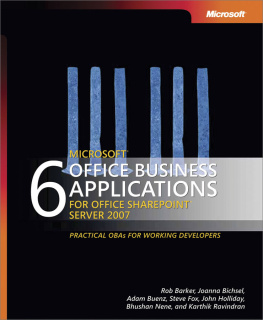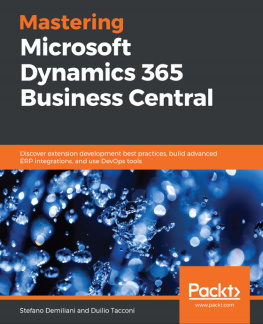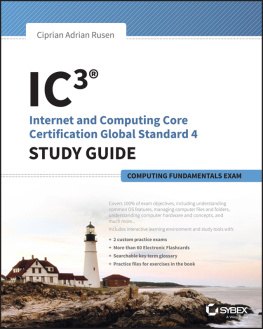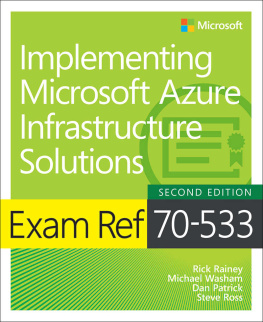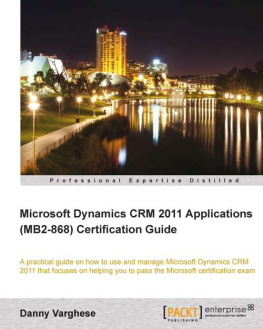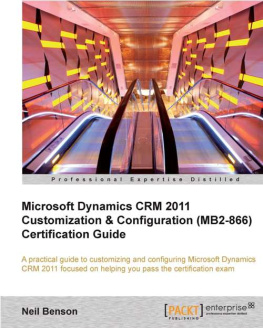About This Electronic Book
This electronic book was originally createdand still may be purchasedas a print book. For simplicity, the electronic version of this book has been modified as little as possible from its original form. For instance, there may be occasional references to sample files that come with the book. These files are available with the print version, but are not provided in this electronic edition.
Expanding Graphics
Many of the graphics shown in this book are quite large. To improve the readability of the book, reduced versions of these graphics are shown in the text. To see a full-size version, click on the reduced graphic.
About This Book
Welcome to the A+ Certification Training Kit. Thistechnology-based training kit is intended to provide the user with theskills necessary for A+ Certification. It is a study of thecomputerits hardware and softwarefrom its earliestbeginnings, through the advent of the mainframe and personal computers,up to present-day Pentium processor-driven machines.
The computer industry has evolved and grown phenomenally since itscommercial inception in the 1960s. This industry is so vast and complexthat no one can claim to understand all its aspects. However, toparticipate in this ever-changing and growing industry, the computertechnician must be able to demonstrate a level of proficiency withcomputers and technology. Certification is a first step in establishingyour presence as a computer professional. It provides you with theopportunity to gain the skills you need, it helps you establish yourknowledge base, and it gives you the confidence to get started.
NOTE
For more information on becoming A+ Certified,refer to the section titled ""later in this introduction.Each chapter in this book is divided into lessons. Each lesson endswith a brief summary, and each chapter concludes with a chapter summaryand a set of review questions to test your knowledge of the chaptermaterial.
The "" section of this introductionprovides important instructions that describe the hardware and softwarerecommendations presented in this course. Read through the sectionthoroughly before you start the lessons.
Intended Audience
This book was developed for the entry-level computer technician, aswell as the experienced technician who is seeking certification. Forthe entry-level student, it starts by explaining the basics and moveson to more complex topics. It introduces the simple concepts thatunderlie today's computers. Once this foundation is established, itbrings you up to date with the latest technology covered by the A+exam. For the more experienced user, it provides a fresh review andfocus on what is required to meet the objectives of the A+ exam.
Prerequisites
There are no formal prerequisites such as course work or specificknowledge base. This is an entry-level course, and everything you needto know is provided in the text.
To better understand the concepts presented and to complete anyexercises or practices, it would be useful to have a computer with anIntel processor and, at the very least, MS-DOS 6.2 and Windows 3.x. AWindows 95-based computer is recommended. Windows NT or other types ofoperating systems are not recommended because some of their featuresare beyond the scope of the A+ Certification Program.
About the CD-ROM
The companion compact disc contains informational aids that can beused to supplement this book. These include demonstration videos and anelectronic version of the book.
The electronic version of the book requires an HTML browser. IfMicrosoft Internet Explorer is installed on your system (as describedin the "" section), simply double-click any ofthe electronic book files to view them. The demonstrations are storedas HTML files with embedded Microsoft Windows Media Player files. Ifyour machine has standard multimedia support and an HTML browser, youcan view these demonstrations by double-clicking them.
For specific information about what is included on the companion CDand how to access this information, see the README.TXT file on theCD.
Features of This Book
Each chapter opens with a "Before You Begin" section,which prepares you for completing the chapter.
The body of each chapter provides detailed coverage of the subjectsyou'll need to study to prepare for the test. The"Review" sections at the end of each chapter allow you totest what you have learned in the chapter lessons. They are designed tofamiliarize you with the types of questions you might encounter on theexam.
Chapter and Appendix Overview
This self-paced training course combines instruction, procedures,multimedia presentations, and review questions to teach you what youneed to know for A+ Certification. It is designed to be completed frombeginning to end, but you can choose a customized track and completeonly the sections that interest you. (See the next section,".") If you choose thecustomized track option, be sure to check the "Before You Begin" section in each chapter. Any concepts or procedures thatrequire preliminary work from preceding chapters will steer you to theappropriate chapters.
This self-paced book is divided into the following chapters:
- The "" section contains aself-paced training overview and introduces the components of thistraining. Read this section thoroughly to draw the greatest educationalvalue from the self-paced training and to plan which lessons you willcomplete.
- , "Introduction to Computers," sets thebackground for the rest of the lessons. It provides an historic view ofcomputers from their beginning to today's high-speed marvels. Thissection also explores the role of today's computer technician.
- , "Understanding Electronic Communication," discusses how computers communicate. It explainsthe differences between the language we use and the language ofmachines.
- , "An Overview of the Computer," definesthe basic elements of a computer's hardware and how theyinteract.
- , "The Central Processing Unit," explainsthe development of the microprocessor, focusing on what differentiateseach type of processor and how to identify each.
- , "Supplying Power to a Computer," coverspower supplies, including how they work and how to troubleshootproblems.
- , "Primary PC Components," discusses thecomponents that make up a motherboard, from the computer case to theBIOS (Basic Input/Output System).
- , "Memory," covers the various types ofmemory found in a computer, what memory is used for, and how to upgradeor replace it.
- , "Basic Disk Drives," discusses floppydisk drives and hard disk drives. It explores mass storage devices, howthey work, and their limitations.
- , "High-Capacity Disk Drives," discussesthe barriers imposed by early MS-DOS-based computers and how the newlarge drives have overcome these barriers. It also covers CD-ROM andSCSI drives.
- , "Expansion Buses," defines thecomputer bus, examines the major effect it has had on the developmentof the computer, and why that is.
- , "The Display System: Monitors and Adapters," covers the various monitors and displays, how theywork, and how to troubleshoot them.
- , "Printers, Modems, and Cables,"discusses all the devices that attach to a computer. It focuses on thetwo most common: printers and modems.
- , "The Basics of Electrical Energy,"covers electricity and how it relates to the computer. A computertechnician does not need to be an electrical engineer, but does need tobe able to perform basic tests and to work safely. This chapterprovides the reader with a grounding in these issues.
- , "Upgrading a Computer," covers thebasic tools and techniques used to perform common upgrades to acomputer, including computer disassembly and reassembly.


